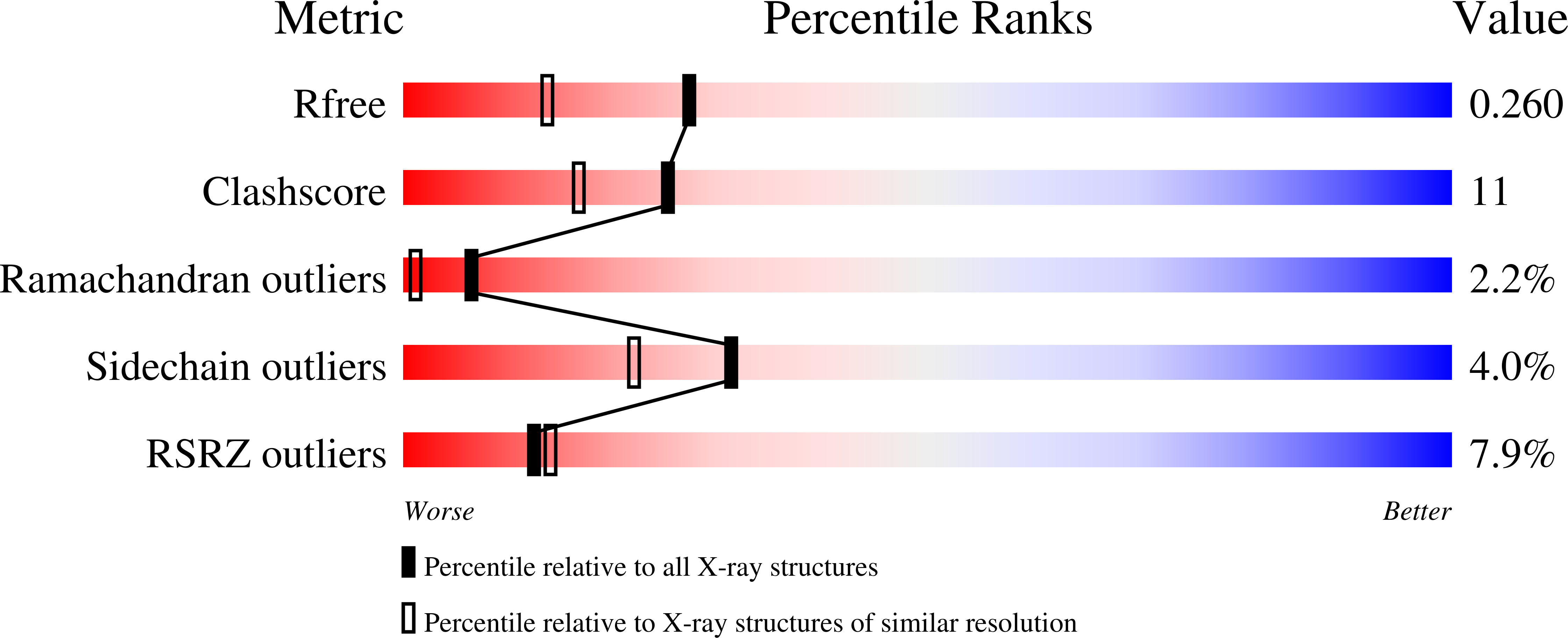Crystal structure of Rsr, an ortholog of the antigenic Ro protein, links conformational flexibility to RNA binding activity.
Ramesh, A., Savva, C.G., Holzenburg, A., Sacchettini, J.C.(2007) J Biol Chem 282: 14960-14967
- PubMed: 17392270
- DOI: https://doi.org/10.1074/jbc.M611163200
- Primary Citation of Related Structures:
2NVO - PubMed Abstract:
Ro ribonucleoproteins are a class of antigenic ribonucleoproteins associated with rheumatic autoimmune diseases like systemic lupus erythematosus and Sjögrens syndrome in humans. Ro ribonucleoproteins are mostly composed of the 60-kDa Ro protein and small cytoplasmic RNAs, called Y RNAs, of unknown function. In eukaryotes, where Ro has been found to associate with damaged or mutant RNAs, it has been suggested that Ro may play a role in RNA quality control. In the radiation-resistant bacterium Deinococcus radiodurans and some eukaryotes, Ro has also been implicated in cell survival following UV damage. Here we present the first high resolution structure of a prokaryotic Ro ortholog, Rsr from D. radiodurans. The structure has been solved to 1.9 A resolution and shows distinct differences when compared with the eukaryotic apo- and RNA-bound Ro structures. Rsr is composed of two domains: a helical RNA binding domain and a mixed "von Willebrand factor A-like" domain containing a divalent metal binding site. Although the individual domains of Rsr are similar to the eukaryotic Ro, significantly large differences are seen at the interface of the two domains. Since this interface communicates with the conserved central cavity of Ro, which is implicated in RNA binding, changes at this interface could potentially influence RNA binding by Ro. Although the apo-Rsr protein is monomeric, Rsr binds Y RNA to form multimers of approximately 12 molecules of a 1:1 Rsr-Y RNA complex. Rsr binds D. radiodurans Y RNA with low nanomolar affinity, comparable with previously characterized eukaryotic Ro orthologs.
Organizational Affiliation:
Department of Biochemistry and Biophysics, Texas A & M University, College Station, Texas 77843, USA.















